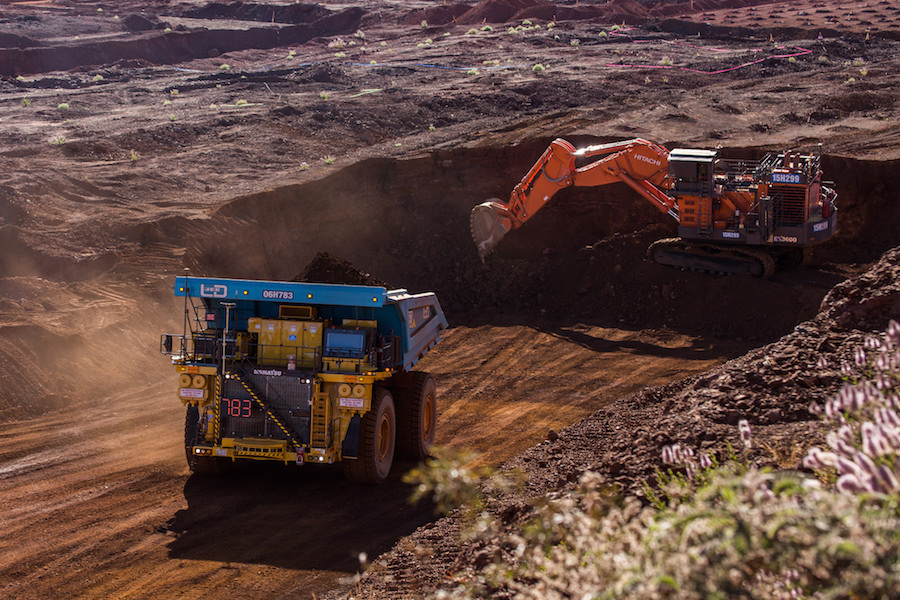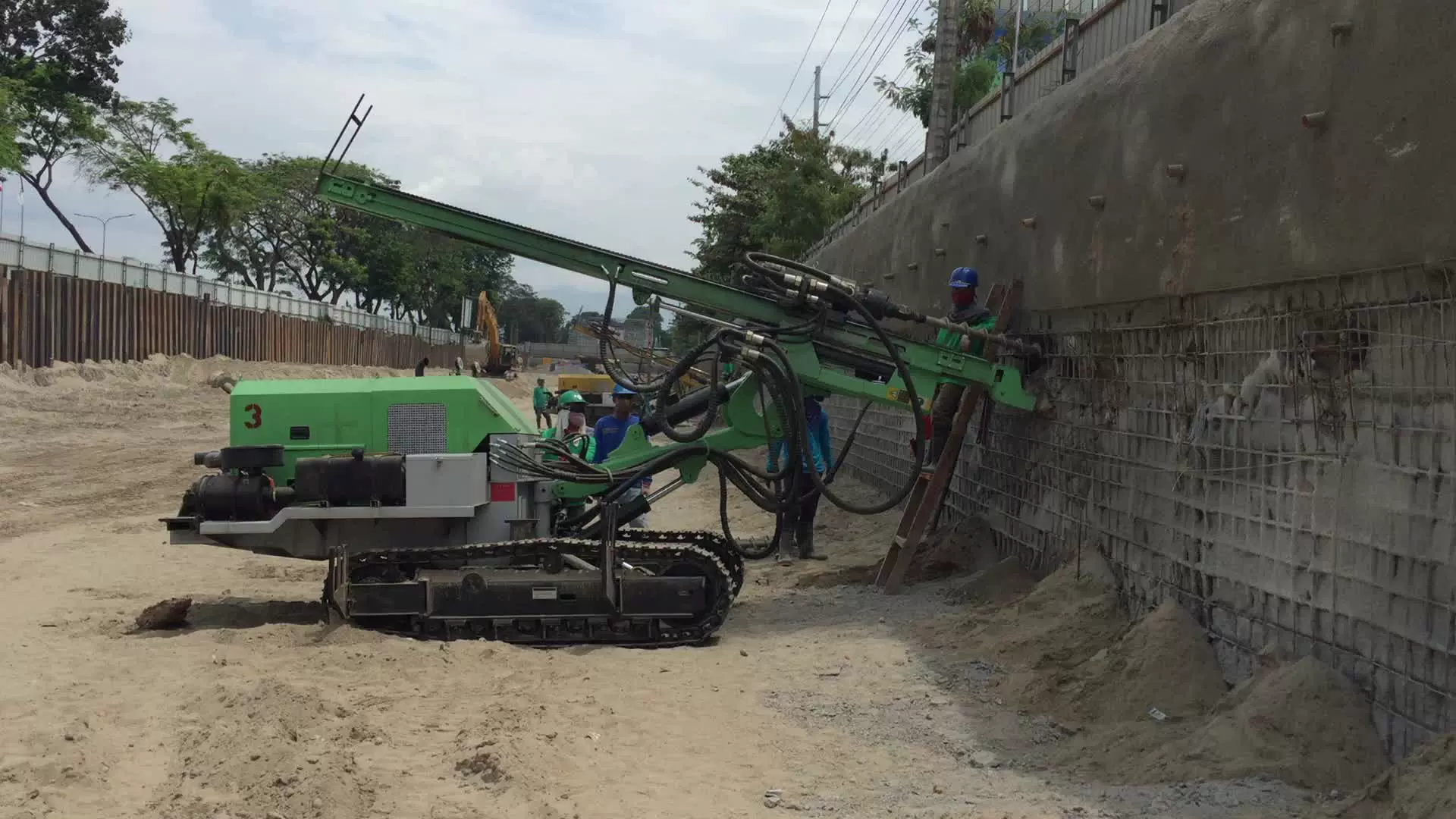Rio Tinto And The Pilbara: A Dispute Over Environmental Sustainability

Table of Contents
Rio Tinto's Mining Activities in the Pilbara
Rio Tinto is one of the world's largest mining companies, and its operations in the Pilbara are on a massive scale. The company's primary focus is the extraction of iron ore, a crucial component in steel production globally. This extensive mining activity has significant consequences for the environment.
- Massive iron ore production impacting the landscape: Open-cut mining dramatically alters the landscape, creating vast pits and waste rock dumps. This fundamentally changes the natural topography and visual character of the region.
- Significant water usage for mining and processing: The extraction and processing of iron ore require enormous amounts of water, placing strain on already limited water resources in the arid Pilbara. This water usage can impact local ecosystems and potentially exacerbate water scarcity issues.
- Dust generation and air quality concerns: The movement of vast quantities of earth and ore generates significant dust, impacting air quality and potentially affecting human health and local ecosystems. Dust control remains a major ongoing challenge.
- Habitat destruction and biodiversity loss: Mining activities inevitably destroy habitats, leading to biodiversity loss. The clearing of land for mining operations displaces native flora and fauna, impacting the delicate ecological balance of the Pilbara.
- Use of heavy machinery and potential for soil erosion: The use of heavy machinery can contribute to soil erosion and degradation. This can lead to further environmental damage and long-term land instability.
Environmental Concerns Raised by Critics
Environmental groups, local communities, and Indigenous groups have raised significant concerns about the environmental impact of Rio Tinto's operations in the Pilbara. These concerns extend beyond the immediate effects of mining to include broader, long-term consequences.
- Damage to fragile ecosystems: Critics highlight the damage to fragile ecosystems, including the destruction of important habitats and the loss of unique flora and fauna found only in the Pilbara. This includes concerns about the impact on endangered species.
- Water depletion and its effect on local flora and fauna: The immense water consumption by Rio Tinto's operations is viewed as a significant threat to the already stressed water resources of the region, impacting both the local ecosystems and potentially the communities reliant on these resources.
- Greenhouse gas emissions contributing to climate change: The mining, processing, and transportation of iron ore contribute to greenhouse gas emissions, adding to global climate change. This is a growing concern given the global commitment to reducing carbon emissions.
- Lack of transparency and insufficient community consultation: Concerns have been raised about a lack of transparency in Rio Tinto's environmental reporting and insufficient consultation with local communities and Indigenous groups affected by the mining operations.
- Calls for stronger environmental regulations and monitoring: Critics argue for stronger environmental regulations and stricter monitoring to ensure that Rio Tinto adheres to the highest environmental standards and that the impacts of its operations are fully assessed and mitigated.
The Juukan Gorge Incident and its Aftermath
The destruction of the Juukan Gorge rock shelters in 2020 represents a watershed moment in the debate surrounding Rio Tinto's environmental responsibility. These ancient rock shelters held significant cultural and historical importance to the Puutu Kunti Kurrama and Pinikura (PKKP) people, containing evidence of human habitation spanning tens of thousands of years.
- Explanation of the historical and cultural significance of the site: The Juukan Gorge shelters were of immense cultural and spiritual significance, containing irreplaceable archaeological artifacts and rock art.
- Public outcry and criticism of Rio Tinto's actions: The destruction of the site sparked widespread public outrage and condemnation of Rio Tinto's actions, leading to calls for greater corporate accountability and respect for Indigenous heritage.
- Subsequent investigations and legal repercussions: Following the incident, investigations were launched, leading to legal repercussions for Rio Tinto and prompting a critical review of the company's environmental and cultural heritage management practices.
- Changes implemented by Rio Tinto in response to the incident: In the aftermath, Rio Tinto implemented changes to its operations, including a commitment to more robust cultural heritage management protocols and improved community consultation.
Rio Tinto's Sustainability Initiatives
Rio Tinto has implemented various initiatives aimed at addressing environmental concerns and improving its sustainability performance. However, the effectiveness and scale of these initiatives remain a subject of ongoing debate.
- Investments in renewable energy sources (solar, wind): The company has invested in renewable energy projects to reduce its reliance on fossil fuels and lower its carbon footprint.
- Water management strategies (recycling, efficient usage): Rio Tinto has implemented water recycling and efficiency programs to reduce its water consumption.
- Dust suppression techniques: Various dust suppression techniques are employed to mitigate the impact of dust generation on air quality.
- Biodiversity conservation programs: The company has undertaken biodiversity conservation programs aimed at mitigating the impact of its operations on local ecosystems.
- Community engagement and consultation initiatives: Efforts have been made to improve community engagement and consultation processes.
- Carbon reduction targets and strategies: Rio Tinto has set carbon reduction targets and is implementing strategies to achieve these goals.
The Ongoing Debate and Future Outlook
The debate surrounding Rio Tinto's environmental sustainability in the Pilbara is ongoing. Finding a balance between economic development and environmental protection remains a significant challenge.
- Balancing economic benefits with environmental protection: The need to balance the economic benefits of iron ore extraction with the protection of the environment is a central theme of the ongoing discussion.
- The need for stricter environmental standards: Calls for stricter environmental standards and more rigorous enforcement remain prominent.
- The importance of transparent communication and community involvement: Transparent communication and meaningful community involvement are crucial for building trust and ensuring that environmental concerns are adequately addressed.
- Potential for innovative solutions and technological advancements in sustainable mining practices: Innovative solutions and technological advancements in sustainable mining practices offer the potential to reduce the environmental impact of resource extraction.
- Long-term implications for the Pilbara's environment and its people: The long-term implications for the Pilbara's environment and the wellbeing of its people will depend on the success of efforts to mitigate the environmental impact of mining activities.
Conclusion
The dispute over Rio Tinto's operations in the Pilbara highlights the complex challenges of balancing economic development with environmental sustainability. While Rio Tinto has implemented several initiatives, concerns remain regarding the long-term effects of its mining activities. The Juukan Gorge incident serves as a stark reminder of the need for greater transparency, accountability, and respect for Aboriginal heritage. Moving forward, a collaborative approach is essential to ensure a sustainable future for the Pilbara. This demands a commitment to responsible mining practices and continuous dialogue on mitigating the environmental impact of large-scale resource extraction. Only through ongoing scrutiny and proactive sustainability measures can we hope to resolve the ongoing dispute around Rio Tinto and the Pilbara's environmental sustainability.

Featured Posts
-
 Paid Access Guaranteed Privacy Trumps Memecoin Gathering
May 23, 2025
Paid Access Guaranteed Privacy Trumps Memecoin Gathering
May 23, 2025 -
 Trinidad Trip Curtailed Dancehall Star Accepts Restrictions Receives Kartels Love
May 23, 2025
Trinidad Trip Curtailed Dancehall Star Accepts Restrictions Receives Kartels Love
May 23, 2025 -
 Southwest Airlines Carry On Changes And Portable Charger Regulations
May 23, 2025
Southwest Airlines Carry On Changes And Portable Charger Regulations
May 23, 2025 -
 Analysis Of Big Rig Rock Report 3 12 96 Focus On The Rocket
May 23, 2025
Analysis Of Big Rig Rock Report 3 12 96 Focus On The Rocket
May 23, 2025 -
 Why Dylan Dreyer Almost Missed Hosting The Today Show The Full Story
May 23, 2025
Why Dylan Dreyer Almost Missed Hosting The Today Show The Full Story
May 23, 2025
Latest Posts
-
 A Married Couples Fight Over Joe Jonas His Reaction
May 23, 2025
A Married Couples Fight Over Joe Jonas His Reaction
May 23, 2025 -
 Joe Jonass Perfect Response To A Couples Fight Over Him
May 23, 2025
Joe Jonass Perfect Response To A Couples Fight Over Him
May 23, 2025 -
 How Joe Jonas Handled A Couple Arguing Over Him
May 23, 2025
How Joe Jonas Handled A Couple Arguing Over Him
May 23, 2025 -
 Joe Jonass Reaction To A Couple Fighting Over Him The Full Story
May 23, 2025
Joe Jonass Reaction To A Couple Fighting Over Him The Full Story
May 23, 2025 -
 The Jonas Brothers Joe Jonas Addresses Fan Dispute
May 23, 2025
The Jonas Brothers Joe Jonas Addresses Fan Dispute
May 23, 2025
